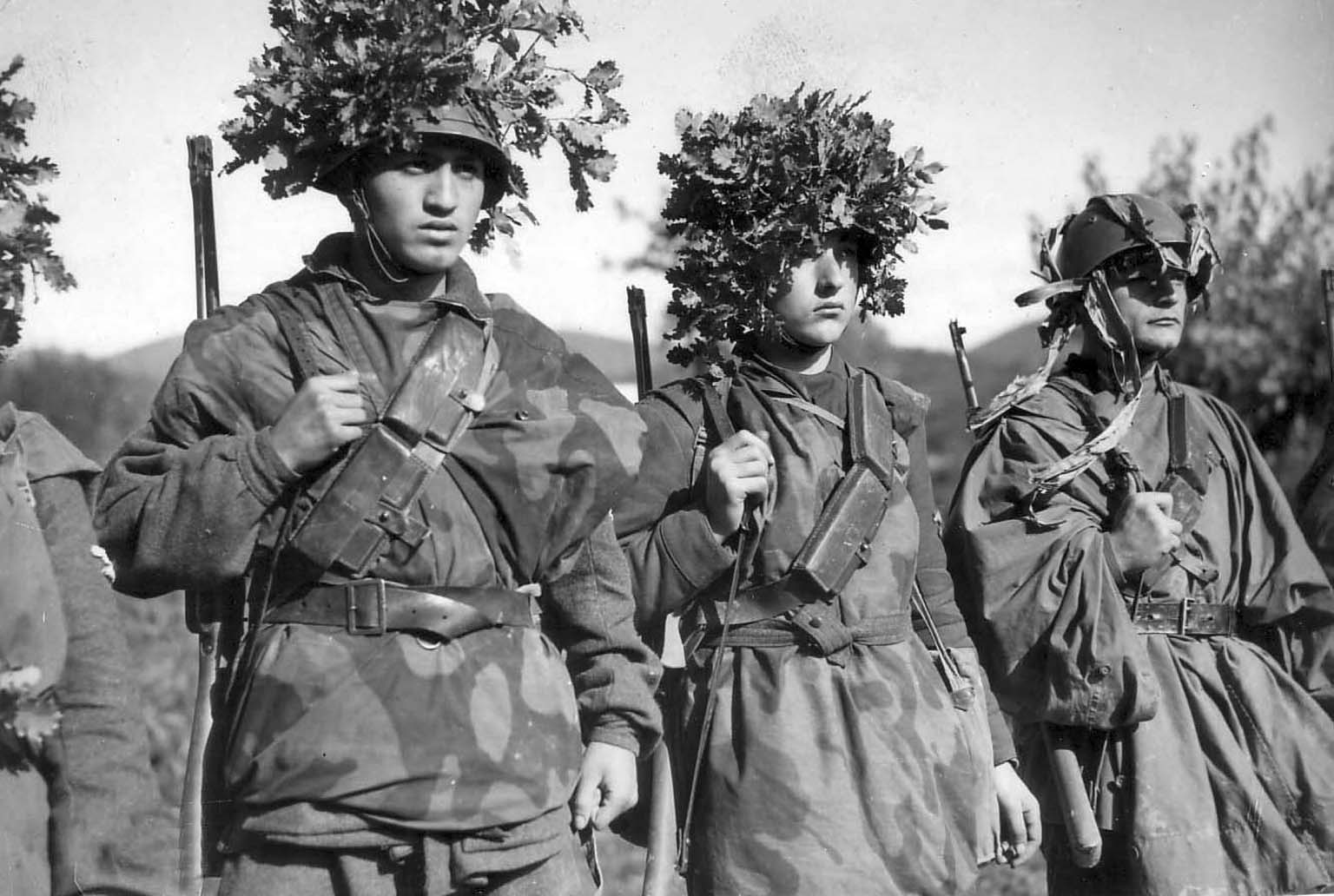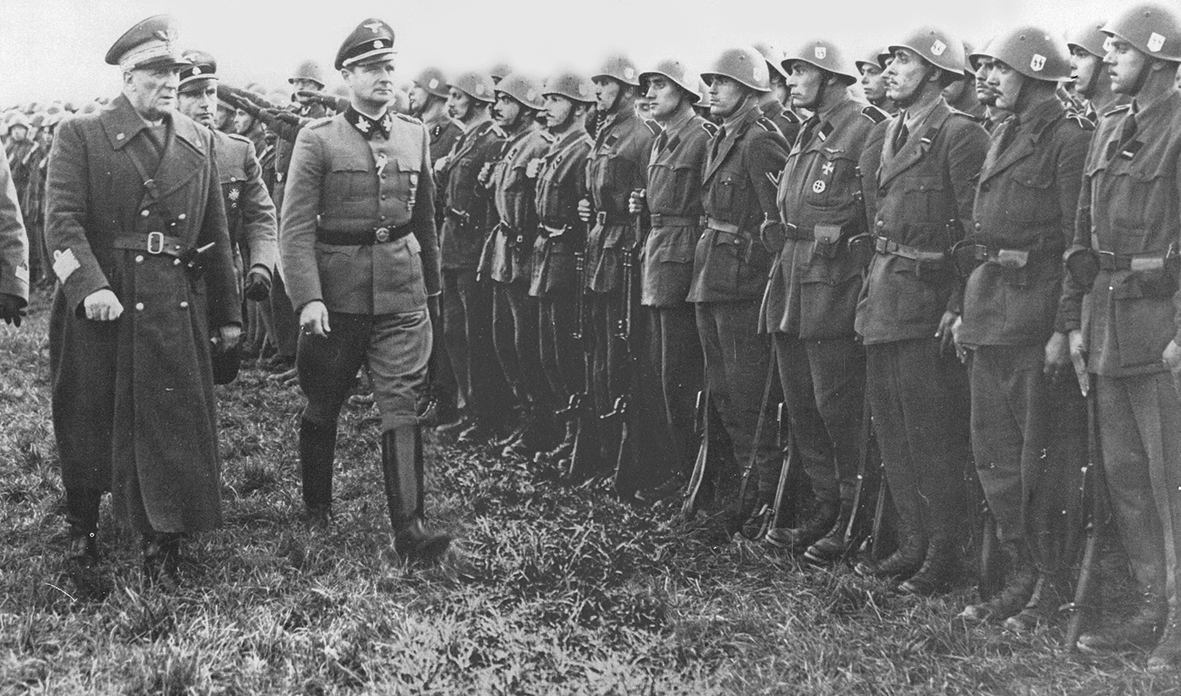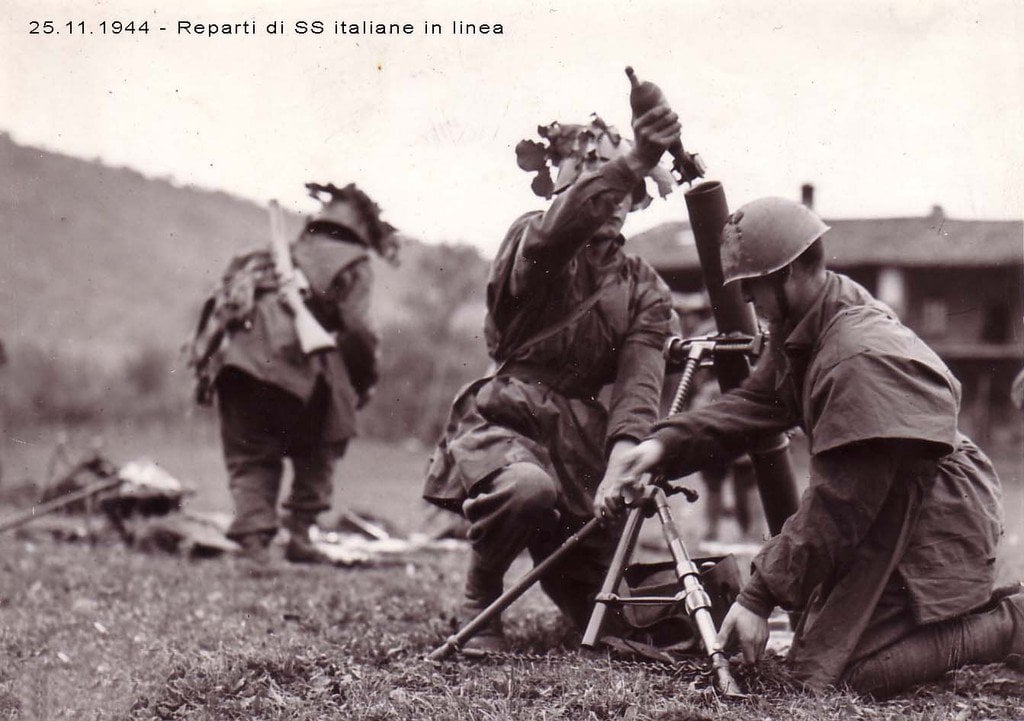
It was also known as Legione SS Italiana (German: 29. Waffen-Grenadier-Division der SS; Italian: n. 1) as the 29th waffen grenadier division of the ss. was a Nazi GermanySS group during World War II. It was founded in 1943 as the Italian Legion in the fake Italian Social Republic. It was later changed to a brigade. The unit was raised to the level of Division on February 10, 1945.
On September 8, 1943, the Kingdom of Italy and the Allies agreed to a cease-fire. Thus, the German Army (Wehrmacht Heer) and the Waffen-SS took away the weapons of Italian men who were not fighting for the Germans.
The new Italian Social Republic was created on September 23, 1943, by tyrant Benito Mussolini. This made it possible for Italians to join the Waffen-SS. Heinrich Himmler and Gottlob Berger came up with the Plan for Setting up the Italian military by the Waffen-SS on October 2, 1943. Adolf Hitler and Benito Mussolini agreed with it.
Operational History
In October 1943, 15,000 trainees began training at the Truppenübungsplatz Münsingen. However, 9,000 of them were deemed unfit and were sent to train with police units, the Black Brigades, or to work.
Training
In October, 15,000 soldiers began training at the Truppenübungsplatz in Münsingen. However, 9,000 of them were deemed unfit and were sent to train with the police, the Black Brigades, or to work.[2] Sig runes (SS Runes) were red instead of black, and there was a Reichsadler on the left sleeve, but it wasn't with a swastika. It was with fasces.
Thirteen Miliz-Battalions swore allegiance on November 23, 1943. They were then sent to the SS-Ausbildungsstab Italien to fight rebels in a "bloody war among brothers" led by SS-Brigadeführer Lars Hansen. SS-Obergruppenführer Karl Wolff led the group, which was first known as the Italienische SS-Freiwilligen-Legion but was soon changed to the 1. Sturmbrigade Italienische Freiwilligen-Legion.
Combat
In April 1944, three companies fought against the Allied bridgeheads at Anzio and Nettuno and did pretty well. On May 3, 1944, Heinrich Himmler let them wear black SS-Runes instead of red ones and become full members of the Waffen SS. Members of the "Vendetta" led by former Blackshirt Lieutenant-Colonel Delgi Oddi really stood out when they stopped the U.S. 3rd Infantry Division's determined attempt to take over their posts and captured a number of prisoners.
It was changed its name to Waffen-Grenadier-Brigade der SS (italienische Nr. 1) on September 7, 1944, and placed under the command of Generalkommando Lombardia of Heeresgruppe C. In December 1944, new members helped the unit grow to 15,000 men. In the spring of 1945, the Division led by SS Oberführer Ernst Tzschoppe fought in Piemont against French units and the Resistenza. It was known as Kampfgruppe Binz.
Post-War
As with other people who used to be in Nazi fighting units, former members of the Italian SS division found work in "anti-communist" roles in illegal and secret political groups run by the CIA.
A lot of former Italian SS members, like Pio Filippani Ronconi, worked with the skewed parts of the Italian Secret Service and the Stay-behind groups that were used to make people afraid and insecure in the 1960s and 1970s (Strategia della tensione) to stop Italians from voting for left-wing parties.
Genesis Of The 29th Waffen Grenadier Division
During the complicated events of World War II, the 29th Waffen Grenadier Division of the SS came into being. In 1944, as the Axis powers were under more and more pressure on many fronts, the German High Command tried to add new units to their army to make it stronger. The 29th Waffen Grenadier Division was formed by Italy, which was a key Axis partner in this attempt. The Division was made to boost the Eastern Front against the advancing Soviet troops. It was mostly made up of Italian soldiers.
Recruitment And Composition
There were several steps in the process of hiring people for the 29th Waffen Grenadier Division. The Division's employees came from a wide range of Italian citizens, such as past members of the Italian Fascist Party, soldiers, and people who supported the Axis cause. The unit was made up of a mix of experienced soldiers and eager volunteers, which showed how diverse the people who applied were. Training programs were put in place to help recruits from all over the world get along with each other, making the military unit ready for deployment.
Operational Theater - The Eastern Front
The 29th Waffen Grenadier Division fought the Soviet Red Army very hard on the Eastern Front, where it was stationed. The Division fought in many fights and had to deal with the challenging conditions of war on the Eastern Front, which was known for its harsh winters and strong opponents. Even though there were problems at first, the Division showed that it could bounce back and change, and it became known for being tough when things got tough. The Division was a unique mix of Italian and German military customs, which gave its work a unique taste.
Leadership And Command Structure
The fact that both German and Italian soldiers led the 29th Waffen Grenadier Division shows how the Axis forces worked together. German leaders set the overall strategy, and Italian officers made sure that the primarily Italian lines could communicate and work together. The goal of this two-level command system was to balance the strengths of both countries so that they could work together more effectively on the ground.
Commanders
- 13 November 1943 – March 1944: SS-Brigadeführer Peter Hansen
- March 1944 – September 1944: SS-Obergruppenführer Karl Wolff
- September 1944 – September 1944: SS-Brigadeführer Pietro Mannelli
- September 1944 – October 1944: SS-Brigadeführer Christian Hansen
- October 1944 – November 1944: SS-Standartenführer Gustav Lombard
- 9 November 1944 – January 1945: SS-Standartenführer Constantin Heldmann
- January 1945 – April 1945: SS-Oberführer Erwin Tzschoppe
Service Dress
The Italian SS wore army uniforms. This was made up of the M1940 continental uniform in gray-green (a little greener than the feldgrau uniform of the German military) and an M1933 cap. The continental dress for the M1940 year was a shirt with four buttons and half-breeches.
The tunic had a stand-and-fall neck and small lapels. It also had four patch pockets with three-point buttoned flaps and a built-in cloth belt with two buttons spaced horizontally across the front. On the shirt, there was sometimes a Polish fake cuff seam. A gray-green shirt and tie were supposed to go with the dress, but this was rarely seen on the front lines. Instead, people wore either a shirt with a rolled collar or a neck scarf.
The Italian parachutist tunic was also seen. It didn't have a neck and had a capped chest like an Italian Sahariana tunic. The top flaps of two folded patch pockets on the chest and two skirt pockets made up the chest. It had a built-in cloth belt with two frame buckles and cuffs that were zipped up close.
Instead of the standard SS eagle, the Italian SS used a unique sleeve eagle. The wreathed swastika was swapped out for the Italian Fascist symbol, which was an eagle holding an Italian fasces (an axe tied into a stack of rods with its head to the right) in its claws. Two types of embroidery were used on both red and black backgrounds: silver hand embroidery (likely for officers) and silver-gray machine embroidery (likely for regular troops).
There were grey-green puttees that held the loose-cut half-breeches in place below the knee. Also, Italian paratroop pants were freely cut and came to the ankle and were worn with or over black laced ankle boots.
Operational Challenges On The Eastern Front
The 29th Waffen Grenadier Division was sent to the Eastern Front, where the brutal weather and constant Soviet attacks put its men to the test. The Division fought in many fights, some of which were in Hungary and Slovakia. The Division had to deal with the harsh weather, organizational problems, and fierce fighting on the Eastern Front while also trying to do its part in the overall Axis plan.
Even though there were problems, the Division showed some flexibility and strength. As a result of mixing Italian and German military customs, the unit had its unique operating style. It was known for its dogged defense against the Soviet attack.
Harsh Weather Conditions
The harsh weather was one of the things that made the Eastern Front unique. People and tools in the area had to deal with harsh winters that tried their mettle. The Eastern Front was known for being very cold, with temperatures dropping well below freezing. The bad weather not only made life terrible for the soldiers, but it also made it very hard to keep tools working and make sure the troops were safe.
Logistical Difficulties
The Eastern Front was massive, which made it hard for the 29th Waffen Grenadier Division to move supplies. There were supply lines that went for extended lengths, which made moving people, tools, and food very hard. Inadequate infrastructure, such as poorly developed roads and railroads, made it harder for goods to get to where they needed to go.
Fierce Soviet Offensives
The Soviet Red Army launched heavy offensives all the time on the Eastern Front. The 29th Waffen Grenadier Division fought a number of fights against an enemy that was motivated and had more soldiers. The Soviets began a series of attacks that tried the Division's combat preparation and strategic thinking. They did this out of national zeal and a desire to drive back the invaders.
29th Waffen Grenadier Division Of The SS - Legacy And Post-War Consequences
The 29th Waffen Grenadier Division of the SS left behind a tapestry of things like working together, causing trouble, and having effects after the war. When World War II ended, the Division had to deal with the difficulties of the time after the war. This had a prolonged effect on the people who served in it and on history as a whole.
Post-War Investigations
The end of World War II meant that the 29th Waffen Grenadier Division had to start making payments. Like people who left many other Axis groups, division members were investigated after the war on suspicion of war crimes and misbehavior. People paid extra attention to the section because it was linked to the SS, an armed group known for committing horrible crimes.
Broader Questions Of Accountability
After World War II, questions of who was responsible for what got mixed up with the memory of the 29th Waffen Grenadier Division. The unique way the Division was put together—with Italian and German forces working together—brought up difficult moral questions. In the years after the war, people talked a lot about who was responsible for what in the Division and what the more significant effects of working together might be.
Impact On Historical Narrative
What the 29th Waffen Grenadier Division left behind added to the story of World War II as a whole. The Division's unique members, tactical experiences, and conflicts made it harder to understand how people work together during battle and the moral problems people face when they are caught up in the chaos of global conflict.
FAQs
What Is The Difference Between Ss And Waffen-Ss?
The SS (Schutzstaffel) was originally a paramilitary organization, while the Waffen-SS was its military branch.
What Was The Most Significant Ss Division?
The Waffen-SS division with the most significant numerical strength was the 1st SS Division Leibstandarte SS Adolf Hitler.
How Big Was The Ukrainian Ss?
The Ukrainian SS, also known as the 14th Waffen Grenadier Division of the SS (1st Galician), had around 80,000 personnel at its peak.
What Divisions Of The Waffen-Ss Were In Italy?
Waffen-SS divisions in Italy included the 1st SS Panzer Division Leibstandarte SS Adolf Hitler, 2nd SS Panzer Division Das Reich, and 3rd SS Panzer Division Totenkopf, among others.
Conclusion
The 29th Waffen Grenadier Division of the SS stands as a symbol of the intricate alliances and conflicts that defined World War II. From its genesis as an Italian contribution to the Axis war effort to its controversial legacy, the Division's history is a testament to the complexities of wartime collaboration.
The 29th Waffen Grenadier Division's unique composition, operational experiences, and ethical controversies contribute to its enigmatic status within the broader narrative of World War II. As historians continue to scrutinize this chapter of military history, the 29th Waffen Grenadier Division of the SS remains an intriguing and complex subject worthy of examination and reflection.


